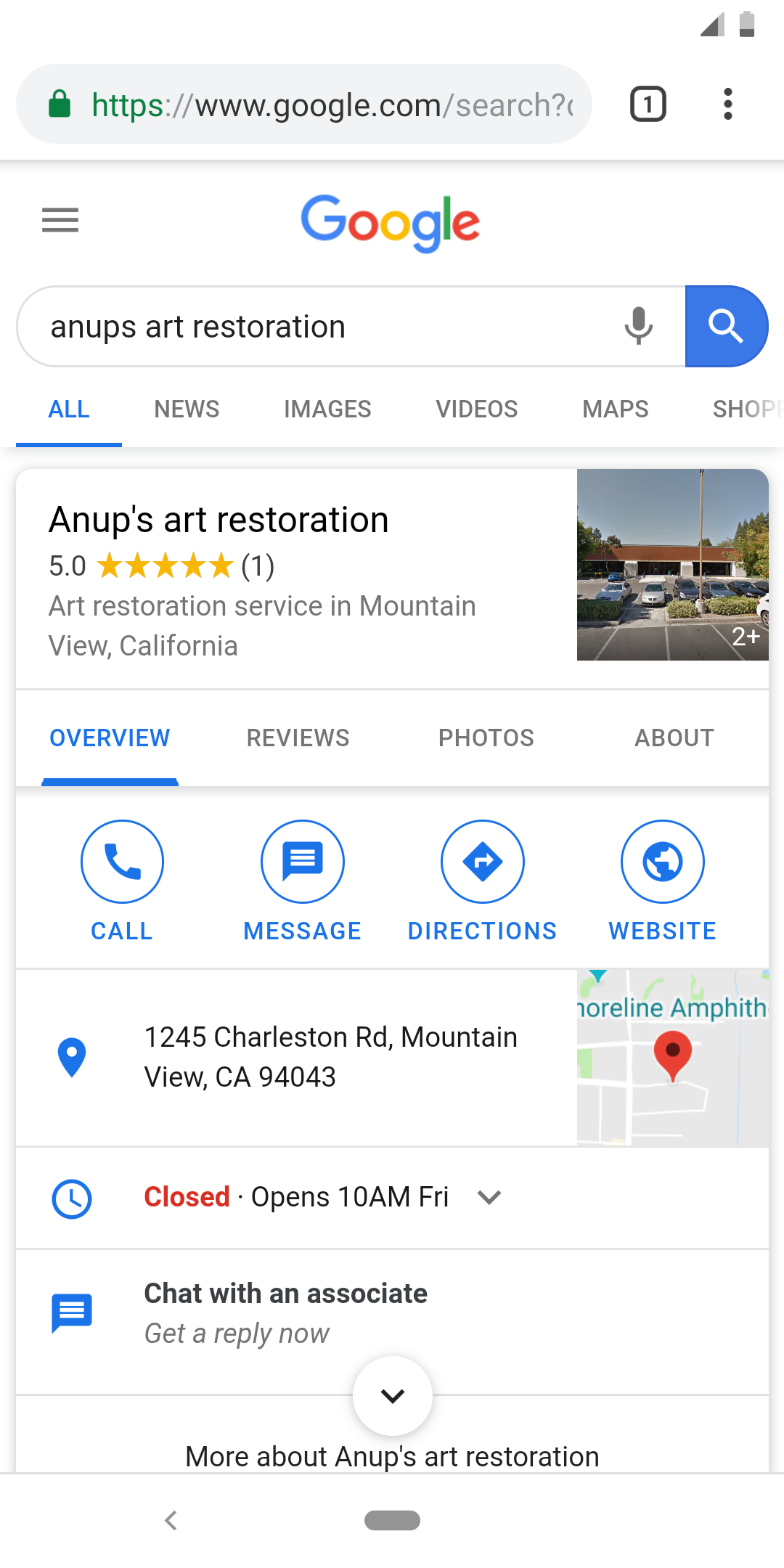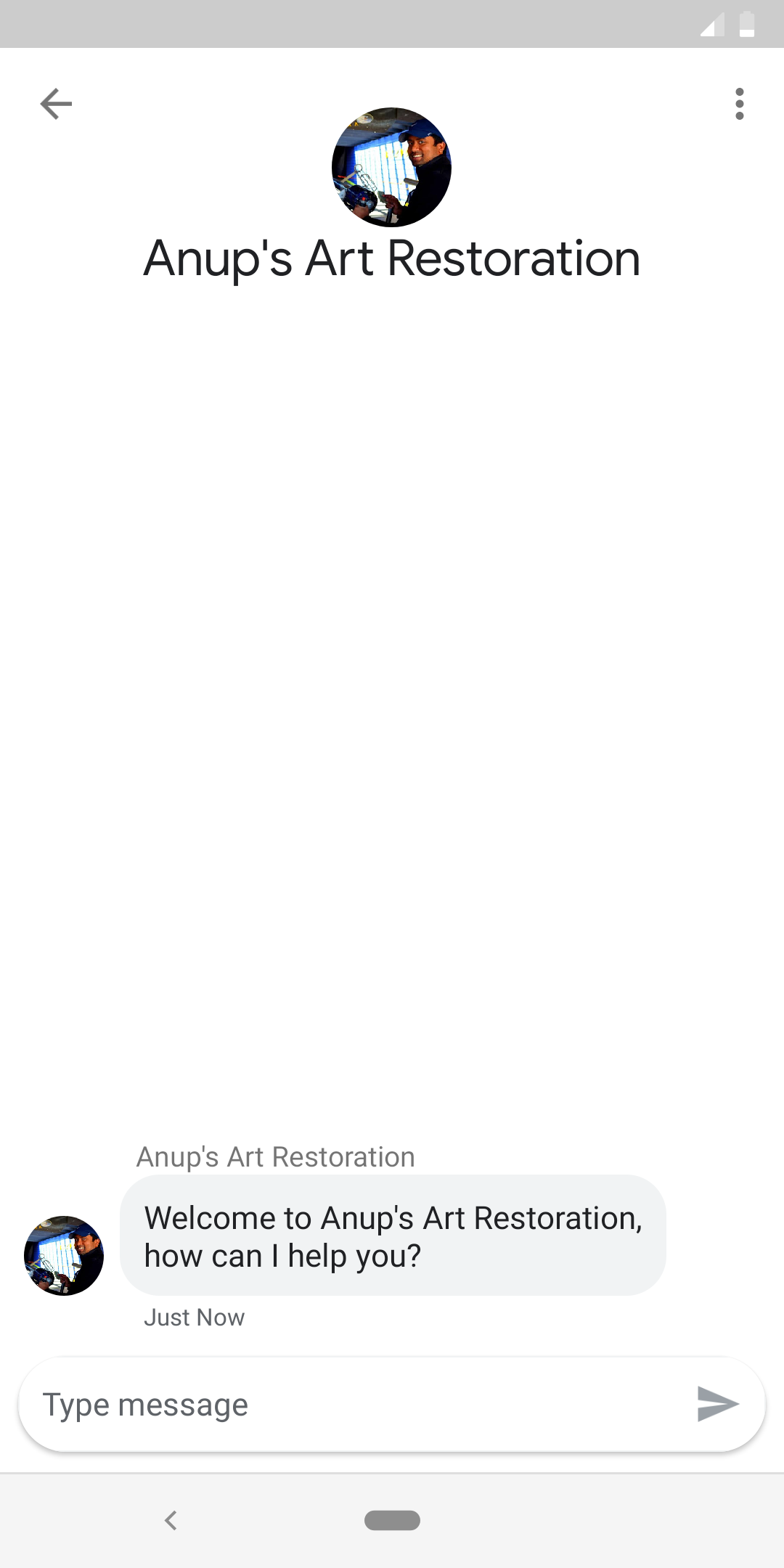您可以使用 Business Messages,在 Google 自然搜尋結果中放置品牌的訊息按鈕。使用者點選訊息按鈕時,就會與代表品牌實體 (品牌服務專員) 進行對話。
對話會在 iOS 和 Android 裝置上提供的 Google 訊息介面中進行。您可以使用 webhook 和 Business Messages API,透過服務機器人接收及回覆客戶訊息。
Business Messages 對話的生命週期
註冊 Business Messages 並為品牌建立服務專員後,使用者就能透過服務專員傳送訊息給品牌或品牌的營業地點。使用者搜尋並找到您管理的品牌時,結果中會顯示訊息按鈕。

使用者輕觸「訊息」按鈕時,系統會在使用者的裝置上與品牌的服務專員開始對話,服務專員會向使用者問候,並顯示歡迎訊息。

使用者傳送訊息時,Google 會將訊息傳送至您定義的 webhook,做為 JSON 酬載。視訊息內容和用途而定,您可以將訊息轉送至正確的目的地:業務地點的員工、其他地方的支援人員,或自動回覆系統。
您的員工或基礎架構為使用者訊息建立回應後,您就可以將該回應傳送至 Business Messages API,後者會透過品牌的服務專員將訊息傳送給使用者。
對話會持續進行,直到你和使用者停止傳送訊息為止。您最多可以在使用者傳送訊息後的 30 天內傳送訊息。對話結束後,使用者可以返回對話並重新與服務專員互動。對話會以非同步方式進行,無論是服務專員還是使用者皆是如此。
加密
使用者和服務專員之間傳送的訊息會在使用者裝置和 Google 伺服器之間,以及 Google 伺服器和 Business Messages 服務專員之間加密。為了保護所有使用者和商家,Google 需要掃描訊息是否含有垃圾內容。因此,商家無法使用自己的加密金鑰。
使用者裝置收到的訊息會透過使用者為裝置設定的任何裝置端加密方式進行加密,Google 也會部署裝置端安全性模型來保護訊息資料。
訊息介面
Google 會使用豐富的對話式訊息介面,進行商家訊息對話。這個介面可在 Android 和 iOS 裝置上觸發,並且適用於大多數的手機使用者。
Google 地圖應用程式的導覽選單中,有一個 Business Messages 收件匣。
進入點
商家訊息的進入點包括行動瀏覽器中的 Google 自然搜尋結果,以及 Google 地圖應用程式 (適用於以地點為主的品牌)。
後續步驟
瞭解商家訊息對話的基本流程後,請詳閱規範,並註冊成為 Business Messages 合作夥伴。


